Kodak Luma 450 projector review: pocket-sized projector
The Kodak Luma 450 is a little slim on smart features, but it’s also slim and small enough to fit in the pocket of a coat or bag
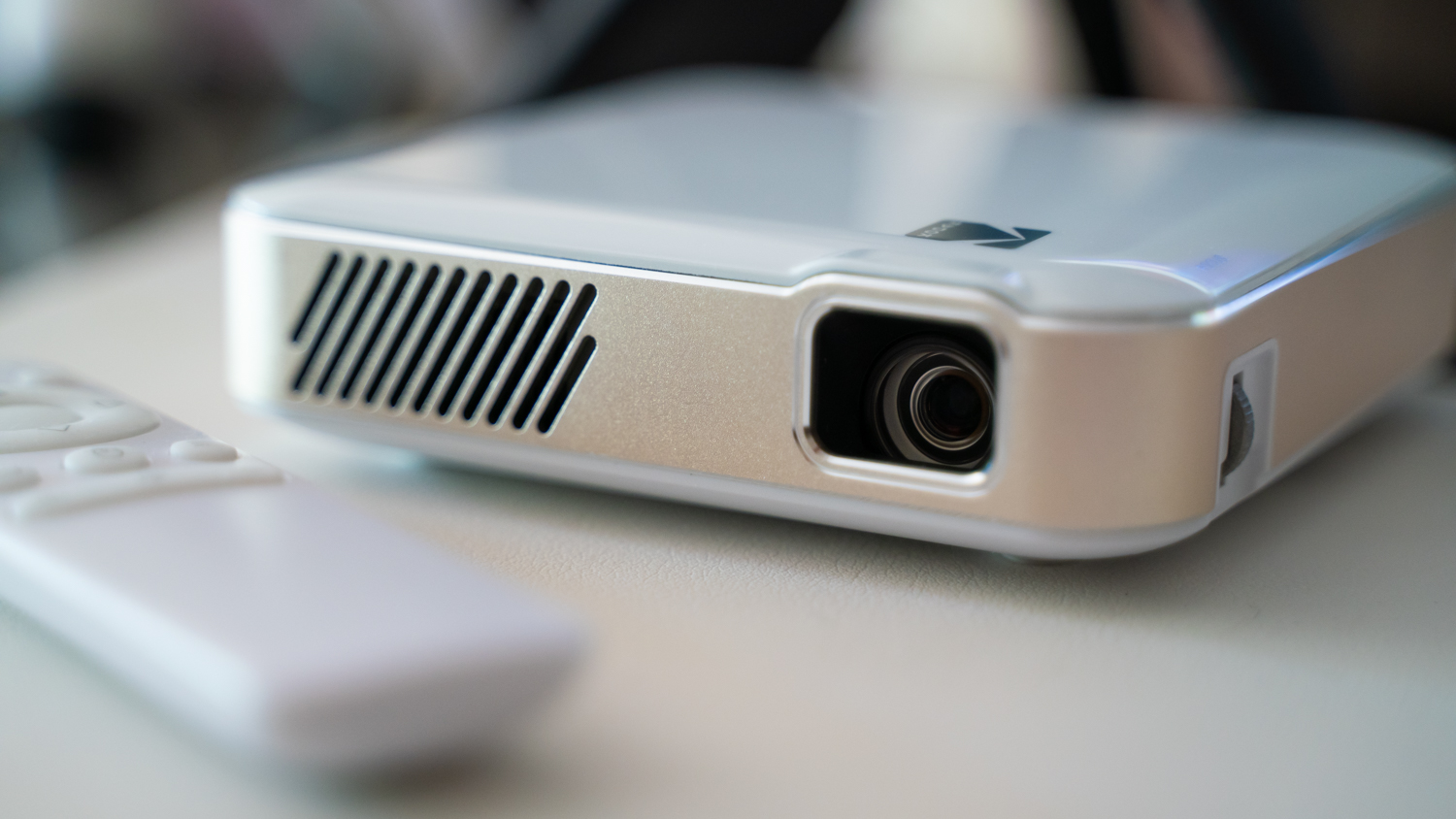
Next to the Kodak Luma 450, other portable and mini projectors out there feel like absolute behemoths. It’s a bit slimmed-down on smart TV features and at 200 lumens it’s not particularly bright, but its focus is on keeping things super compact and portable. And, at that, it succeeds.
-
+
Incredibly light and compact
-
+
Great build
-
+
Native 1080p resolution at 150-inch image projection
-
-
Disappointing smart TV features
-
-
Not bright enough
-
-
Middling built-in speakers
Why you can trust T3

Not all smart mini projectors are created equal. While many of them focus on smart features, a handful home in on portability. You’ll find compelling reasons to go for one, as you would for the other. So, choosing the best mini projector for you is just a matter of figuring out what you need from yours.
The Kodak Luma 450 belongs to the latter. That isn’t to say that it doesn’t have smart features. On the contrary, it’s one of the few smart mini projectors out there that still have Netflix support, and it also comes with an app that makes navigation easier. However, its smart features aren’t as robust as its rivals.
Instead, the Kodak Luma 450 takes the “mini” in mini projector to another level, stuffing everything – including a native 1080p projection resolution – in a sleek, shiny, pocket-sized frame that you can quickly grab and stuff in your coat pocket. The rest, it leaves to equally portable streaming devices like Chromecast with Google TV and Roku Streaming Stick 4K.
If portability is much more important to you than anything else, you’ll want to take a look at this projector.
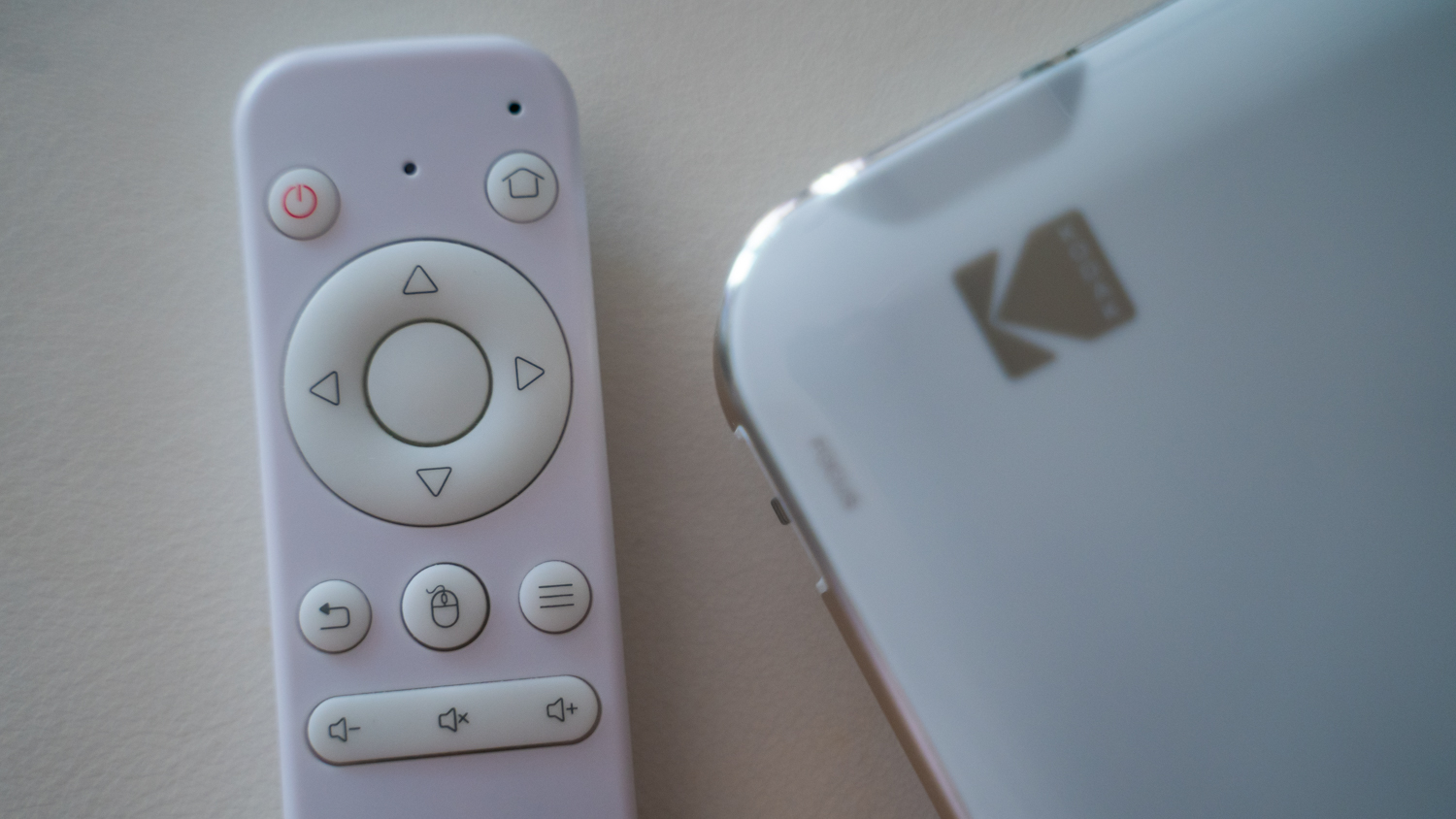
Kodak Luma 450 projector review: price and release date
The Kodak Luma 450 is a tad older than most portable projectors on the market. It hit the shelves back in July 2020. Still, considering that many mini projectors have come out since then, it has managed to keep up with the best of them, at least in terms of features and design.
Speaking of design, expect to pay a bit more for that pocket portability. Kodak Luma 450 will set you back $550 in the US and £550 in the UK, which puts it in the mid-range in terms of portable projectors.
However, that price also includes a tabletop tripod for convenient mounting. There aren’t any other accessories available from Kodak at the moment.
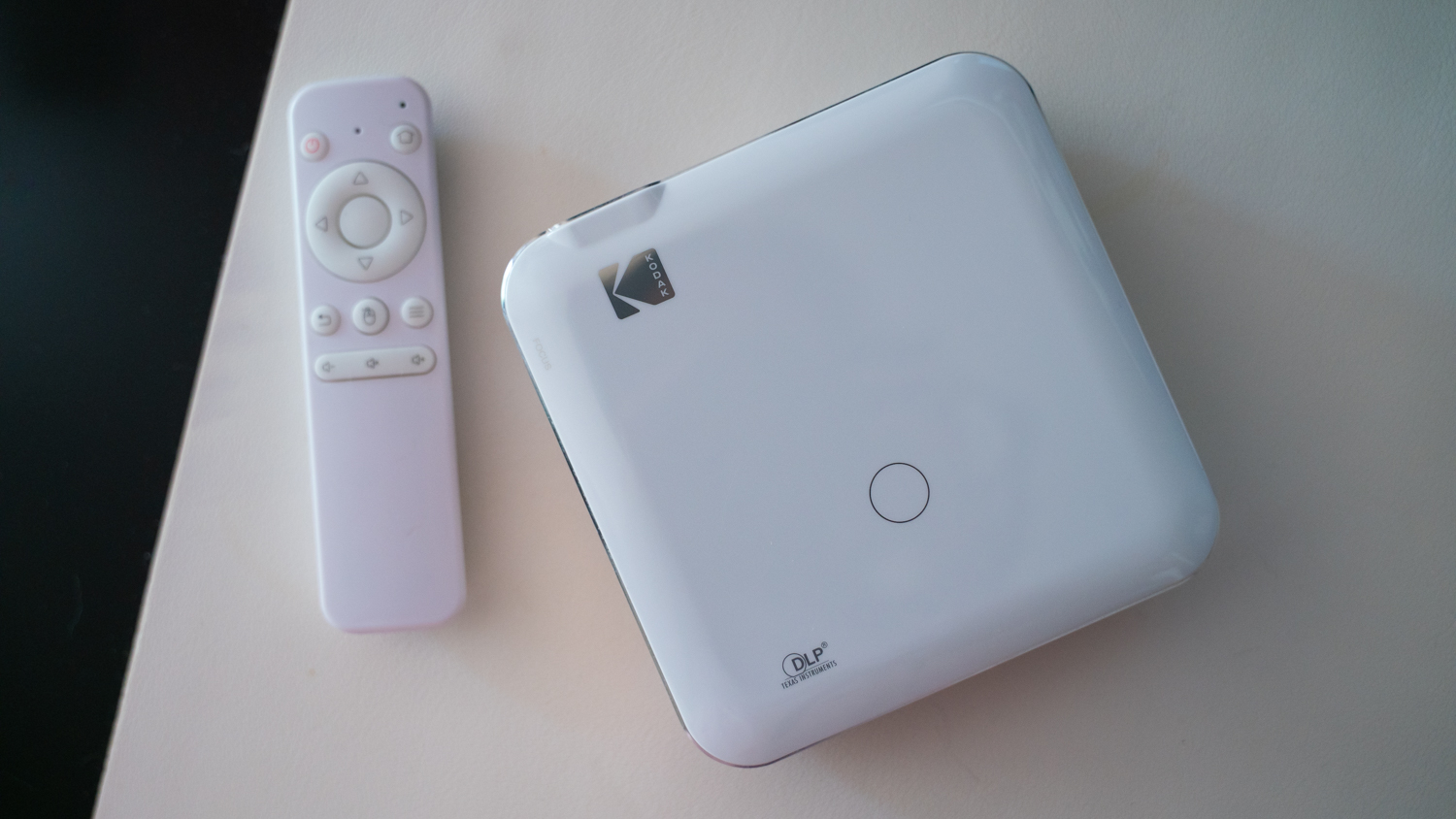
Kodak Luma 450 projector review: design
When I say pocket-sized, I don’t mean that you can fit the Kodak Luma 450 in your shirt or jeans pocket. It’s a little bit bigger than that. However, it's not just small and compact at 1.26 x 4.9 x 4.9 in (3.2 x 12.45 x 12.45 cm), it’s also pancake-thin. This means you can easily slip it inside your coat pocket, for example, or in the pocket of your backpack – something I have done myself.
It makes for an excellent travel companion, not just on long road trips but also on trips when plane travel is involved. We all know that traveling light is the secret to air travel – unless you want to shell out more for excess luggage – and this mini projector is ideal for that. You have to be careful to protect the lens, however. It doesn’t come with a travel pouch for safe transport, and it doesn’t come with a lens cap or shutter. Luckily, the lens is recessed, so at least it is somewhat protected.
Scratches can be an issue with the Kodak Luma 450 overall. The white top panel is glossy, and the gold side panel isn’t scratch-resistant, which means even a small or light scrape can damage its otherwise premium chassis. That’s another reason Kodak should have opted to include a protective pouch in the box. Luckily, it seems solidly built. I can’t quite tell you what a hard fall would do to it, but it wouldn’t fall apart if it got jostled around in your bag during a backpacking trip.
Unfortunately, I can’t say the same about its accessories. The included ball head tripod, while useful, feels like it’s made of cheap plastic and is not what I would consider robust. The same can be said about the remote. The good news is that there are well-built pocket tripods out there, so you can get one for cheap. I have found both the Manfrotto PIXI Mini and the Joby GorillaPod to be very reliable – although I prefer to simply set the projector on a stable surface and adjust its projection accordingly using its keystone correction. As for the remote, it can’t be helped. But, at least, it works as it should.
The Kodak Luma 450 comes with dual 1W speakers, but even non-discerning users will find them inferior (more on that later). Luckily, it has Bluetooth connectivity and a 3.5mm audio jack so that you can connect a better- and louder-sounding speaker for a more immersive experience.
There are other ports on hand as well: an HDMI and a USB for input, and a USB-C and a DC input for charging. That’s right, you don’t have to have a wall outlet to charge this projector up. Instead, you can use your laptop power bank, if you have it, to give it a bit of juice, thanks to that USB-C port. You’ll also find those input ports useful since there are limitations to what streaming apps this projector can run.
Finally, the buttons – it has its power button accessible on the right side, although inconveniently, you have to hold it down to power it on/off if you’re not using the remote. On the left side is the focus wheel. And on the top panel are the up, down, right, left and confirm touch buttons. Thanks to the remote, you won’t have to use these much. Still, that touch functionality is an advantage since it will help keep you from moving or shaking the device too much when it’s mounted.
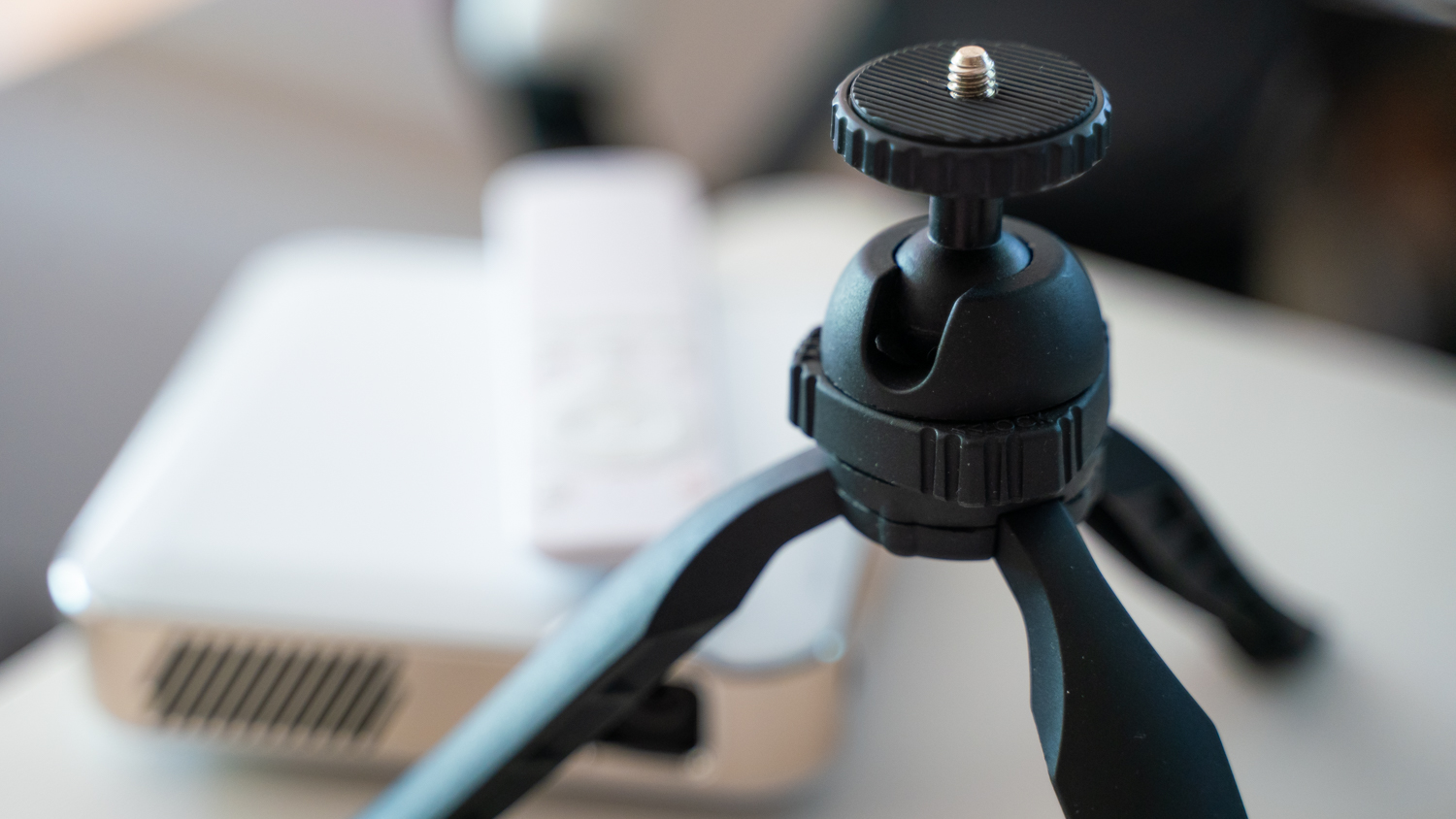
Kodak Luma 450 projector review: features
The Kodak Luma 450 comes with all the vital features, as well as one little extra that improves the way you interact with it.
Let’s take a look at its vital features first. I want to mention that while it does come with most of the things you need, they’re pretty rudimentary. For example, it comes with keystone correction, both automatic and manual, and the manual part is pretty easy to use. However, you cannot make drastic adjustments here, just enough to make the projected image straight when you cannot physically mount the device in the most ideal way. You can also adjust the brightness level, but only insofar as you can choose between high, normal, and eco modes.
In the same way, you can download streaming apps via AptoideTV, like YouTube, Amazon Prime Video, Netflix and Plex. However, most top streaming services are either unavailable or not supported in their current version. The Hulu app had difficulties logging me in, and the HBO Max app wouldn’t run because it was an older version. Others like Peacock and Disney+ were not even available to download. While Netflix is still available on whatever Android OS this projector is using, it’s also a weird combination of its mobile and non-mobile versions and is extremely annoying to use.
When it comes to streaming services you’re better off porting a Roku Stick or a Chromecast with Google TV in the back. Luckily, these are both just as pocket-sized.
Navigation is rudimentary as well, although it’s pretty straightforward. The only thing that’s annoying about it is that you hear a click every time you scroll, click, and surf. And, there’s absolutely no way to turn the sound off.
The zoom function helps when you’re adjusting the projected image, however. It lets you easily reduce and increase the screen size to fit the projection based on your keystone adjustments. There are also four projection modes you can choose from, depending on how the device is hoisted and where it’s projecting.
The Kodak Luma 450 comes with Kodak Luma App support, which is easy to connect to initially and improves how you interact with the user interface. The app itself comes with a touchpad for pointer mode, an arrow pad, and a confirm/enter button, as well as the back, home, screen mirroring, power and expanded menu buttons. There’s also a volume slider and a keyboard button, which brings up a keyboard for easy typing when you have to sign in or do a search. That’s just in the first tab. Go to the second tab, and you’ll find all the apps you’ve installed. Instead of scrolling to find the app you want, you can simply tap it in the tab to launch on the projector. It’s pretty nifty.
The app itself can be finicky in terms of connectivity. It sometimes disconnects from the projector even while you’re using it. Luckily, reconnecting is easy and fast. Take extra care using the touchpad as it can be a little too sensitive, registering presses you haven’t even made. Despite those flaws, it’s a useful app to have handy, especially when using the remote feels tedious.
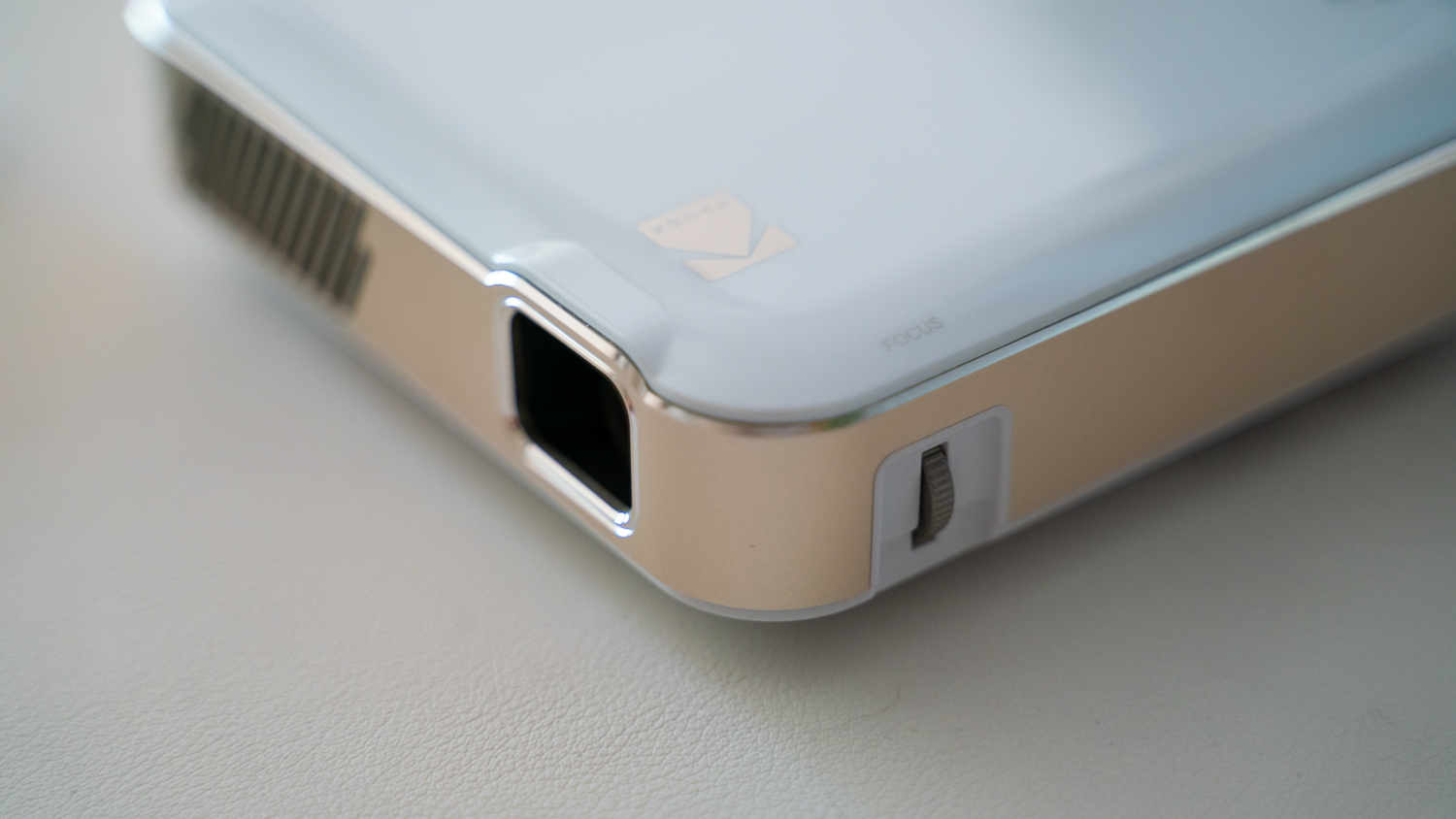
Kodak Luma 450 projector review: performance
Kodak hasn’t been specific about the processor, memory, and integrated graphics that keep the Kodak Luma 450 running. Nor has it divulged the Android OS version it’s using. What I can tell you, however, is that its performance is reasonably snappy. It’s not super fast, but it’s not sluggish either and will have you browsing apps in seconds after powering on.
That’s not surprising. This feels more like the Chromebook of portable projectors in that it probably doesn’t have high-end components powering it, but it also doesn’t have that robust OS and full software functionality that demand them. So, it doesn’t need much to be fast and snappy.
Start-up is pretty fast, as is first-time remote control and Bluetooth pairing. Launching the apps isn’t slow either, but again, app support is rather limited and rudimentary, so you’ll likely prefer plugging in your Chromecast via the HDMI port in the back. These two work beautifully well.
Using Miracast and screen mirroring is pretty disappointing as nothing works. And that’s with every single one of the top streaming apps. After some research, I found out that this is a common problem with many Kodak Luma 450 units. For some users, mirroring works beautifully, but it doesn’t work for most.
The only thing about its performance that annoys me is that it’s really loud. It doesn’t take a lot for the system to get loud, either: just turn on the device. It somewhat puts a damper on the experience, especially because it doesn’t have powerful speakers.
The volume is on par with a small, 11-inch laptop. The sound is very thin, with not a lot of mids or high end and no sign of the low end. There’s mostly just the upper mids, which is a small piece of good news because you can hear and understand dialogue clearly. Still, everything else is quiet, so it’s not immersive. I would suggest connecting this with better speakers via Bluetooth or the 3.5mm audio jack.
The picture quality isn’t bad. The 1080p resolution certainly helps a lot, and the up to 150-inch image projection is more than enough for even a small to medium group of people to enjoy. Don’t expect a lot in terms of color and brightness, however. The 200 ANSI-lumen brightness isn’t just too dark for my taste, but it also makes the colors look a little washed out. That’s despite its 3,500:1 contrast ratio.
It also comes with a built-in battery, which is surprising considering its size. That battery won’t last you long when its brightness is set to high. However, you should be able to squeeze up to three hours of viewing here if the brightness is on eco mode.

Kodak Luma 450 projector review: verdict
The Kodak Luma 450 has sacrificed smart features for portability, but that’s not necessarily a bad thing. This isn’t going to be a projector you’d want to set up in your room to stream movies and shows regularly. That’s not just because of the lack of streaming app support but also because of its mediocre picture quality.
Still, when traveling light is a priority, this mini projector is a champ. It’s so small and compact, you can even stuff it in your coat pocket. Pair it with a pocket-sized streaming device, and you’ve got yourself a portable TV alternative that you can take anywhere with you and watch a movie on with a group of friends or your whole family.

Kodak Luma 450 projector review: also consider
If you need more than just portability, the mini yet mighty Xgimi MoGo Pro+ gives you a more robust OS — and, therefore, more streaming app support, better-sounding speakers, and Google Assistant. It is, however, a little more expensive at $699 / £589.
For something a little cheaper, the Nebula Solar is only $529 / £599. It also has a more robust operating system and more app support. However, it’s a little on the bigger, albeit still portable, side. There’s also a portable version that comes with a battery if you want something for outdoor use.
Sign up to the T3 newsletter for smarter living straight to your inbox
Get all the latest news, reviews, deals and buying guides on gorgeous tech, home and active products from the T3 experts
Michelle Rae Uy is a tech and travel journalist, editor and photographer with a bad case of wanderlust. She is a regular contributor for IGN, TechRadar and Business Insider, and has contributed to Thrillist, Paste Magazine, Nylon, Fodor's and Steve's Digicams. Living mainly in California with her adorable cats, she splits her time between Los Angeles, London and the rest of the world.
-
 Warning: Ciele’s refreshed Elite Collection may cause excessive garment envy on race day
Warning: Ciele’s refreshed Elite Collection may cause excessive garment envy on race dayFlex on your run crew with Ciele’s latest drop
By Matt Kollat Published
-
 Smeg adds a touch of navy sophistication to its iconic breakfast set
Smeg adds a touch of navy sophistication to its iconic breakfast setIt's a minimalist's dream
By Lizzie Wilmot Published
-
 My most anticipated Netflix movie of the year gets a wild new trailer
My most anticipated Netflix movie of the year gets a wild new trailerHavoc looks pretty unbelievable
By Max Freeman-Mills Published